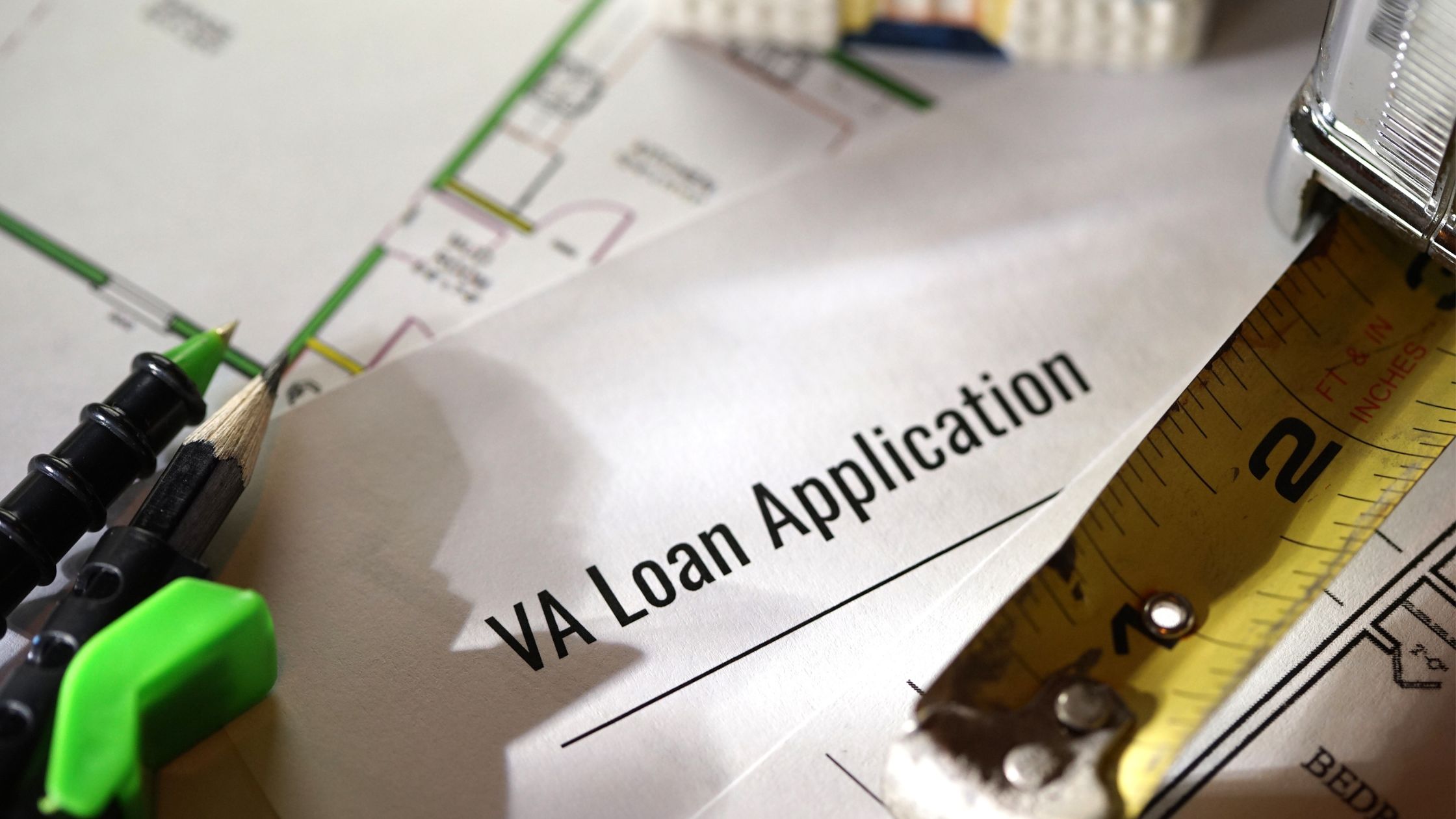VA loans are one of the most valuable financial benefits offered to veterans, active-duty service members, and their families. Backed by the U.S. Department of Veterans Affairs, these loans provide eligible applicants with an opportunity to purchase or refinance a home with competitive interest rates, low to no down payments, and no private mortgage insurance requirements. Understanding how to apply for a VA loan can streamline the process and help you achieve homeownership with minimal financial strain.
In this guide, we’ll break down the VA loan application process into five simple steps. Let’s dive in!
Step 1: Confirm Your Eligibility for a VA Loan
The first step in the VA loan process is to ensure you’re eligible. The VA sets specific eligibility requirements for veterans, active-duty service members, National Guard and Reserve members, and certain surviving spouses. Your service history and discharge status will play a crucial role in your eligibility.
Who Qualifies for a VA Loan?
Typically, you may qualify if you meet one of the following criteria:
- Veterans: Those who served on active duty during wartime or peacetime may qualify.
- Active Duty Service Members: Must serve at least 90 consecutive days during wartime or 181 days during peacetime.
- National Guard or Reserves Members: Members with at least six years of service or who served active duty during wartime may be eligible.
- Spouses of Deceased Service Members: Surviving spouses may qualify if their spouse died in the line of duty or due to a service-related disability.
If you meet these criteria, you can move forward with obtaining a Certificate of Eligibility (COE), which confirms to lenders that you are eligible for the VA loan benefit.
Step 2: Obtain Your Certificate of Eligibility (COE)
The COE is an essential document proving your eligibility to the lender. Fortunately, there are multiple ways to obtain it.
How to Get Your COE
You can get your Certificate of Eligibility through one of these methods:
- Online through the VA’s eBenefits portal: This is the quickest way to apply and receive your COE.
- Through your lender: Many VA-approved lenders have access to the VA’s Web LGY system and can retrieve your COE on your behalf.
- By mail: You can complete VA Form 26-1880, “Request for a Certificate of Eligibility,” and send it to the address specified on the form.
Once you have your COE, you’re ready to move forward with finding a lender.
Step 3: Find a VA-Approved Lender and Get Pre-Approved
Not all lenders are qualified to issue VA loans, so it’s important to find one that is VA-approved. Working with a VA lender will ensure they understand the specifics of VA loans and can help you get the most out of your benefits. After you choose a lender, the next step is to apply for pre-approval.
Why VA Loan Pre-Approval is Important
Getting pre-approved will provide several advantages, including:
- Knowing your loan budget: Pre-approval gives you an idea of how much you can borrow based on your income, credit score, and other factors.
- Strengthening your offer: Sellers are more likely to accept your offer if you have a pre-approval letter showing you’re a serious buyer.
- Identifying any credit issues: During pre-approval, the lender will review your credit history, which helps to spot potential issues early.
To get pre-approved, be prepared to provide documentation of your income, employment history, and financial assets.
Step 4: Find Your Dream Home and Make an Offer
With your pre-approval in hand, you can start shopping for a home within your budget. Consider working with a real estate agent experienced in VA loan transactions, as they can help guide you through VA property requirements and streamline the homebuying process.
VA Loan Property Requirements
To ensure the home is safe, sound, and sanitary, the VA has specific property requirements, which include:
- Living space and safety: The property should meet minimal safety and health standards.
- Heating and water systems: Functional systems are essential for a property to qualify.
- Adequate access to roads: The property should be accessible year-round.
Once you find a home you love, work with your agent to make an offer. If the offer is accepted, your lender will move forward with scheduling an appraisal.
Step 5: Complete the VA Loan Process
After you’ve made an offer, the final steps are getting a VA appraisal and closing on your loan. This part of the process includes a few important steps, from the VA appraisal to the official closing.
Step 5.1: VA Appraisal
The VA appraisal ensures the property meets the VA’s minimum property requirements and is worth the sale price. Note that an appraisal is different from a home inspection; while both assess the property’s condition, the VA appraisal focuses on the home’s value and safety requirements.
Step 5.2: Underwriting
During the underwriting process, the lender reviews all documentation, including your income, employment, credit history, and assets, as well as the appraisal results. If everything checks out, the lender will issue a “clear to close,” which means you’re ready to move forward to the final step.
Step 5.3: Closing
At closing, you’ll sign final loan documents, pay closing costs (which are generally lower with VA loans), and officially take ownership of your home. Make sure to bring a government-issued photo ID, proof of homeowners insurance, and any necessary funds for closing costs.
Key Benefits of VA Loans
Now that you’ve navigated the steps to apply for a VA loan, let’s recap why these loans are so beneficial for veterans and military families.
- No Down Payment: VA loans do not require a down payment, making homeownership accessible for those who may not have significant savings.
- No Private Mortgage Insurance (PMI): VA loans do not require PMI, saving you hundreds of dollars each month.
- Competitive Interest Rates: VA loans offer lower interest rates than conventional loans, which means you’ll save money on interest payments.
- Lower Closing Costs: The VA limits closing costs that lenders can charge, making this a more affordable loan option.
- Flexible Credit Requirements: While a decent credit score is still necessary, VA loans typically have more lenient requirements, giving veterans and service members more flexibility in qualifying for a loan.
Common Questions About VA Loans
1. Can I use my VA loan benefit more than once? Yes, VA loans can be used multiple times. Once you pay off an existing VA loan or sell the home, you can use the benefit again for another property.
2. Can I get a VA loan with bad credit? Yes, you may still qualify for a VA loan with less-than-perfect credit. However, having a higher credit score can improve your interest rate and loan terms.
3. Do VA loans have income limits? No, the VA does not set income limits for VA loan eligibility. However, your debt-to-income ratio and ability to make payments will be considered during the loan process.
Also Read: How Peer-to-Peer Lending Can Boost Passive Income Streams
Final Thoughts
Navigating the VA loan application process doesn’t have to be complex. By following these five simple steps—confirming eligibility, obtaining your COE, finding a lender, getting pre-approved, and completing the loan process—you’ll be well on your way to securing a VA loan and moving into your new home. The VA loan program is designed to offer financial benefits to those who served, making homeownership achievable and affordable for veterans, active-duty service members, and their families.
If you’re ready to take the next step in your homeownership journey, consider reaching out to a VA-approved lender today. With the right guidance, you’ll be one step closer to enjoying the benefits of a VA loan and making your dream home a reality.

